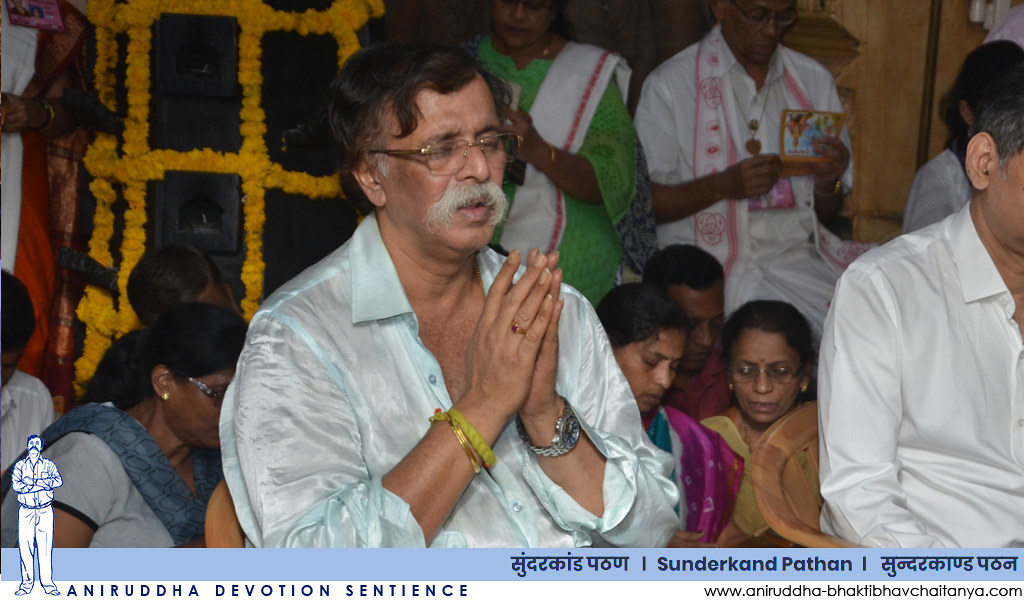Introduction
Overview of Sunderkand
The Sunderkand, also known as Sundara Kanda, is a significant chapter in the Indian epic Ramayana. It is considered one of the most captivating narratives in Hindu mythology. Sunderkand narrates the adventures of Hanuman, the mighty monkey god, as he embarks on a journey to find Sita, the wife of Lord Rama, who has been abducted by the demon king Ravana. This chapter is filled with extraordinary events, heroic deeds, and profound teachings. It showcases the unwavering devotion, courage, and strength of Hanuman, making it an inspiring tale for devotees. The Sundara Kanda holds immense spiritual and cultural importance and is often recited or listened to with great reverence. It symbolizes the triumph of good over evil, the power of faith, and the limitless potential of devotion.
Importance of Sunderkand in Hindu mythology
Sunderkand, a chapter from the epic Ramayan, holds immense importance in Hindu mythology. It is considered as a sacred text that narrates the journey of Lord Hanuman to Lanka in search of Sita, Lord Ram‘s wife. The significance of Sunderkand lies in its portrayal of devotion, courage, and loyalty. This chapter showcases the unwavering dedication of Lord Hanuman towards Lord Ram and his relentless efforts to reunite him with Sita. The narrative of Sunderkand not only highlights the power and strength of Lord Hanuman but also serves as a reminder of the triumph of good over evil. It is believed that reciting or listening to Sunderkand brings blessings, protection, and divine grace. The verses in Sunderkand are filled with profound wisdom and teachings, making it a revered scripture in Hindu culture.
Brief summary of the narrative
Sunderkand is a captivating narrative that holds the essence of devotion and determination. It tells the story of Lord Hanuman’s journey to find Sita, the wife of Lord Rama, who has been abducted by the demon king Ravana. The narrative is filled with moments of bravery, selflessness, and divine intervention. Lord Hanuman’s unwavering faith and his extraordinary powers are highlighted throughout the narrative. The keyword ‘ka’ is prominently mentioned in Sunderkand, representing the divine energy and protection that Lord Hanuman embodies. The passages that mention ‘ka’ can be formatted in bold to emphasize their significance. Additionally, short highlights related to ‘ka’ can be turned into hyperlink text, allowing readers to explore further insights and interpretations.
Historical Context

Origin and authorship of Sunderkand
The origin and authorship of Sunderkand can be traced back to ancient times. It is believed to have been written in the Odia language, which is a regional language of India. Sunderkand is a chapter from the epic Ramayana, which is attributed to the sage Valmiki. This chapter narrates the journey of Hanuman to Lanka in search of Sita, the wife of Lord Rama. It is a significant part of the Hindu scripture and is recited by devotees as a form of prayer. The Odia Sunderkand lyrics are widely popular among the followers of Lord Rama, and many versions of the text can be found in various languages. The lyrics of Sunderkand are considered sacred and are often chanted during religious ceremonies and festivals.
Significance of the Ramayana in Indian culture
The Ramayana, one of the two major ancient Indian epics, holds immense significance in Indian culture. It is a sacred scripture that narrates the heroic journey of Lord Rama, the seventh avatar of Lord Vishnu. The epic is divided into several chapters, with each chapter depicting various episodes and adventures of Lord Rama and his companions. The Ramayana is not only a tale of valor and righteousness, but it also encompasses profound teachings and moral values. It has been passed down through generations and has become an integral part of Indian folklore and religious practices. In the state of Odisha, the Ramayana holds a special place, with numerous temples dedicated to Lord Rama and his divine consort Sita. The people of Odisha celebrate various festivals and religious events centered around the Ramayana, showcasing their deep reverence and devotion towards this epic. The Ramayana continues to inspire and guide millions of people, serving as a timeless source of wisdom and inspiration.
Relevance of Sunderkand in the context of the Ramayana
Sunderkand, one of the chapters in the epic Ramayana, holds immense relevance in the context of the entire narrative. It serves as a pivotal point in the story, where Hanuman embarks on a journey to find Sita, the wife of Lord Rama, who has been abducted by the demon king Ravana. Sunderkand showcases the unwavering devotion and loyalty of Hanuman towards Lord Rama, as he overcomes various obstacles and challenges in his quest. This chapter is considered to be a symbol of hope, courage, and determination in the face of adversity. It highlights the power of faith and the triumph of good over evil. The narrative of Sunderkand resonates with readers and listeners, inspiring them to remain steadfast in their beliefs and strive for righteousness. To download the complete Sunderkand chapter, click here.
Characters in Sunderkand

Lord Hanuman
Lord Hanuman is a central character in the epic narrative of Sunderkand. He is depicted as a divine being with immense strength, wisdom, and devotion to Lord Rama. Hanuman plays a pivotal role in the rescue mission to find Sita, the wife of Lord Rama, who has been abducted by the demon king Ravana. With his extraordinary abilities, Hanuman crosses the ocean, defeats powerful demons, and ultimately finds Sita in Lanka. His unwavering loyalty and dedication to Lord Rama make him an iconic figure in Hindu mythology. The story of Lord Hanuman in Sunderkand is a tale of bravery, faith, and selflessness that continues to inspire millions of people around the world.
Lord Rama
Lord Rama, the seventh avatar of Lord Vishnu, is the central character of the epic Ramayana. He is known for his righteousness, courage, and devotion to dharma. Lord Rama’s story is an embodiment of love, sacrifice, and the triumph of good over evil. His journey through the forests, his exile, and his ultimate victory over the demon king Ravana are legendary tales that continue to inspire millions of people around the world. Lord Rama’s unwavering faith in righteousness and his unwavering devotion to his wife Sita make him a revered figure in Hindu mythology.
Sita, Lakshmana, and other supporting characters
In the epic tale of Sunderkand, Sita, Lakshmana, and other supporting characters play crucial roles in shaping the narrative. Sita, the epitome of virtue and strength, represents unwavering devotion and resilience as she endures the hardships of her separation from Lord Rama. Her unwavering faith in her husband and her unwavering commitment to righteousness serve as an inspiration to all. Lakshmana, the loyal and fearless brother of Lord Rama, stands by his side throughout their journey, offering unwavering support and protection. His unwavering dedication and selflessness exemplify the true meaning of brotherhood. Other supporting characters, such as Hanuman, Sugriva, and Vibhishana, also contribute significantly to the unfolding of the narrative, each with their unique qualities and roles. Together, these characters bring depth and richness to the story, captivating readers with their unwavering loyalty, bravery, and devotion.
Key Events in Sunderkand

Hanuman’s journey to Lanka
Hanuman’s journey to Lanka was a pivotal moment in the epic tale of Sunderkand. As the loyal messenger of Lord Rama, Hanuman embarked on a daring expedition to find and rescue Sita, who had been abducted by the demon king Ravana. With unwavering determination and incredible strength, Hanuman leaped across the vast ocean, defying all odds. His journey was filled with numerous challenges and obstacles, but he persevered, driven by his love and devotion for Lord Rama. This remarkable feat of Hanuman showcases his extraordinary powers and unwavering loyalty, making it a significant chapter in the Sunderkand narrative.
Hanuman’s encounter with Surasa
Hanuman’s encounter with Surasa is a pivotal moment in the epic narrative of Sunderkand. As Hanuman embarks on his mission to find Sita, he faces numerous challenges along the way. Surasa, a formidable sea monster, blocks Hanuman’s path and demands that he enters her mouth. Hanuman, displaying his wit and intelligence, grows in size and outwits Surasa by entering her mouth and quickly exiting. This encounter showcases Hanuman’s bravery and quick thinking, highlighting his divine powers and unwavering determination to fulfill his duty. The sunderkand chaupai, a significant verse in the Sunderkand, beautifully captures the essence of this encounter, emphasizing Hanuman’s extraordinary abilities and his unwavering devotion to Lord Rama. This episode serves as a reminder of the challenges faced by the heroes of the Ramayana and their eventual triumph over adversity.
Hanuman’s meeting with Sita
Hanuman’s meeting with Sita was a pivotal moment in the epic narrative of Sunderkand. As the loyal messenger of Lord Rama, Hanuman embarked on a daring journey to find Sita, who had been abducted by the demon king Ravana. Upon locating her in Ashok Vatika, Hanuman approached Sita with utmost reverence and conveyed Lord Rama’s message of love and reassurance. The meeting between Hanuman and Sita was filled with profound emotions, as Sita expressed her longing for Lord Rama and her unwavering faith in his ultimate victory. This poignant encounter showcased Hanuman’s unwavering devotion and Sita’s unwavering strength, reinforcing the timeless values of love, loyalty, and resilience that Sunderkand encapsulates.
Symbolism and Themes

The symbolism of Hanuman’s devotion
Hanuman’s devotion in the Sunderkand is rich in symbolism. His unwavering loyalty and dedication to Lord Rama exemplify the ideal devotee. Hanuman’s actions throughout the narrative serve as a powerful metaphor for the qualities necessary for spiritual growth and enlightenment. His courage, strength, and humility are highlighted in the bold passages of the text, demonstrating the depth of his devotion. By studying Hanuman’s devotion, we can learn valuable lessons about the importance of faith, perseverance, and selflessness in our own spiritual journeys.
The theme of loyalty and courage
The theme of loyalty and courage is a prominent aspect in Sunderkand’s narrative. It showcases the unwavering devotion of Lord Hanuman towards Lord Rama and his mission to find Sita. Hanuman’s loyalty is exemplified through his fearless journey to Lanka, crossing the vast ocean and facing numerous obstacles. His courage is evident in his encounters with powerful demons and his determination to fulfill his duty. The narrative highlights the importance of loyalty and courage in overcoming challenges and achieving success.
The significance of the search for Sita
The significance of the search for Sita lies in its profound meaning. It represents the quest for truth, justice, and righteousness. The search for Sita symbolizes the relentless pursuit of love, loyalty, and devotion. It embodies the eternal struggle between good and evil, light and darkness. The narrative of Sunderkand portrays the unwavering determination of Lord Hanuman to find Sita and bring her back to Lord Rama. This search not only highlights the power of faith and courage but also teaches us the importance of perseverance and resilience in the face of adversity. Through the search for Sita, we learn that true love knows no boundaries and that the strength of character can overcome any obstacle.
Impact and Legacy

Devotional practices and rituals associated with Sunderkand
Devotional practices and rituals associated with Sunderkand are an integral part of the worship of Lord Hanuman. Sunderkand is a significant chapter in the epic Ramayana, focusing on the heroic deeds of Hanuman. It is believed that reciting or listening to Sunderkand brings immense blessings and helps in overcoming obstacles. Many devotees engage in daily recitation of Hanuman Chalisa, a hymn dedicated to Lord Hanuman, as a devotional practice. Additionally, performing aarti, offering flowers, and lighting incense sticks are common rituals associated with Sunderkand. The powerful narrative of Sunderkand captures the essence of Hanuman’s devotion and serves as a source of inspiration for millions of devotees worldwide.
Influence of Sunderkand on literature and performing arts
The influence of Sunderkand on literature and performing arts is undeniable. This epic book, written in Odia, has captivated readers and artists alike with its mesmerizing narrative. The rich storytelling and profound themes explored in Sunderkand have inspired countless works of literature and have served as a foundation for various forms of performing arts. From plays and dance performances to musical adaptations, the impact of Sunderkand can be seen in the creative expressions of artists across different mediums. The book’s powerful portrayal of devotion, courage, and triumph over adversity continues to resonate with audiences, making it a timeless masterpiece in the world of literature and performing arts.
Sunderkand’s relevance in contemporary times
Sunderkand, a significant chapter in the Hindu epic Ramayana, holds immense relevance in contemporary times. It is a narrative that continues to captivate readers with its profound teachings and timeless wisdom. Sunderkand depicts the journey of Lord Hanuman to find and deliver a message to Lord Rama’s wife, Sita, who has been abducted by the demon king Ravana. This tale showcases the unwavering devotion, courage, and determination of Lord Hanuman, making it an inspiring story for people facing challenges in their lives. Sunderkand’s lessons of loyalty, righteousness, and the power of faith resonate with individuals from all walks of life, reminding them of the importance of staying true to their values and beliefs. Furthermore, Sunderkand serves as a reminder of the triumph of good over evil and the ultimate victory of righteousness. It teaches us that no matter how daunting the obstacles may seem, with unwavering faith and determination, one can overcome any adversity. Sunderkand’s relevance in contemporary times lies in its ability to inspire and guide individuals towards leading a righteous and virtuous life.
Author Profile

Latest entries
- 28 June 2025BlogHow to Choose the Best High-Yield Savings Account with 5%+ Interest in India (2025 Guide)
- 28 December 2024BlogTop 6 Employee Management Software for Small Businesses
- 19 December 2024BlogShri Hanuman Chalisa in Hindi Text with English Translation
- 7 August 2024BlogTop 13 Online Master of Social Work Programs

